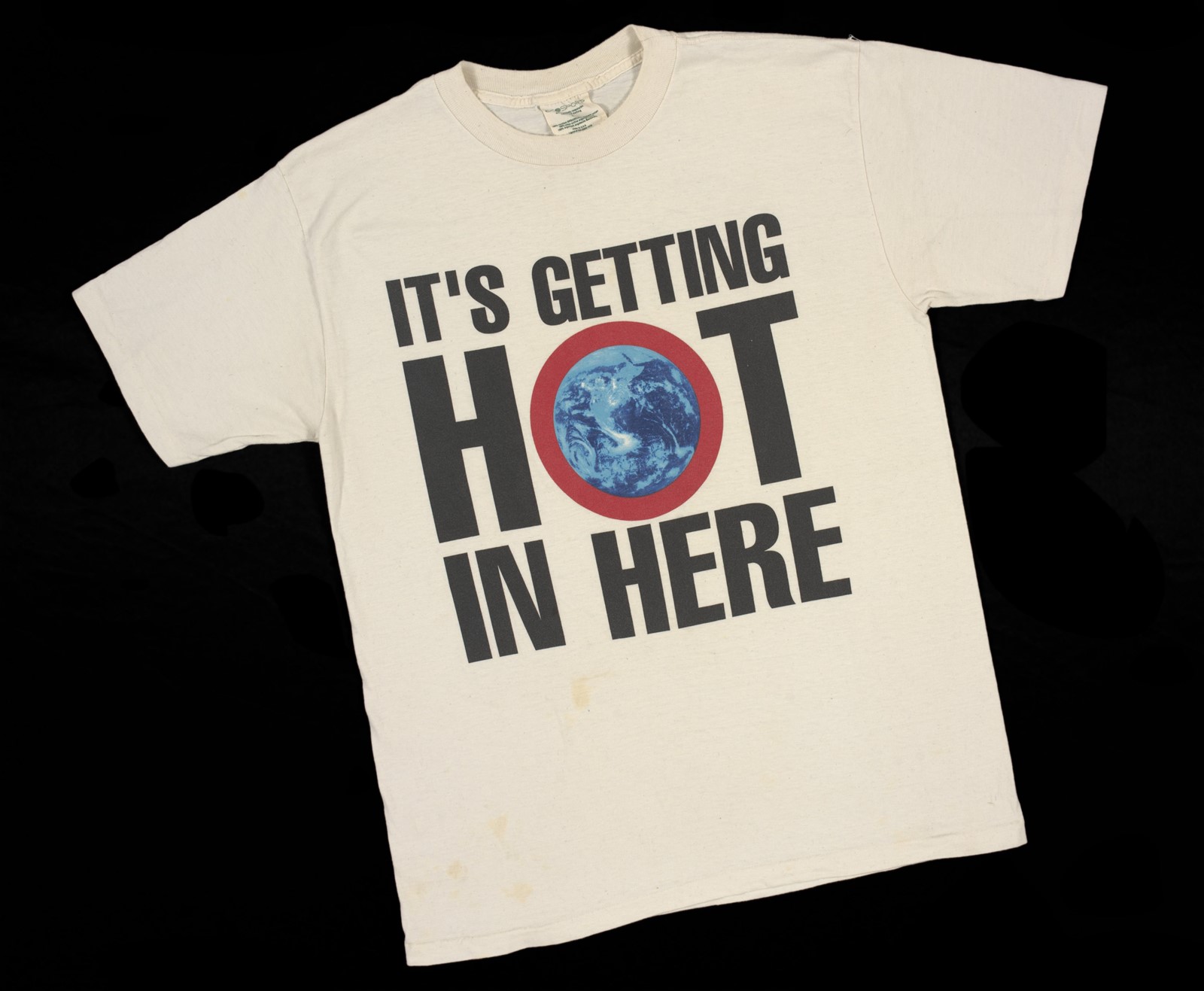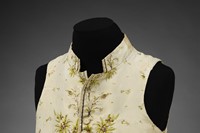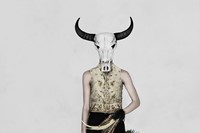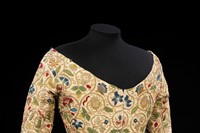In support of 2018’s Fashion Revolution Week – an opportunity to reconsider the industry’s impact on the world, and the people living in it – anothermag.com is running a week-long series of stories about ethical fashion. Here, Cal Revely-Calder reflects on the V&A’s new exhibition, Fashioned From Nature.
In the lower gallery at Fashioned from Nature, the V&A’s new exhibition, there’s a late-19th-century muslin dress. The sleeves are neatly circled in silver-gilt metal thread, and the skirt is embroidered with 5,000 jewel-beetle wings. Their shimmer, as the curator Edwina Ehrman writes, is created by “minute structured surfaces fine enough to interfere with visible light”. This interference is limitless and constant; under the exhibition lamps, the wings not only catch your eye but keep it entranced. Iridescence, a natural effect, is dazzling every time.
This beauty may outshine another story the dress could tell: a silent history of imperial loot. As the exhibition bluntly lays out, these beetle wings were likely imported from India; a shipment of 25,000 had reached Britain a few years before. Muslin had once been handwoven in India too, but probably not in this case; by the 1860s, the Empire had systematically destroyed the Indian muslin industry, imported cheaper raw cotton from American slave plantations, and assigned predominance to its own textile mills. The dress is a triumph of Victorian imperial power, brought to bear on a single woman for a stylish day in the sun.
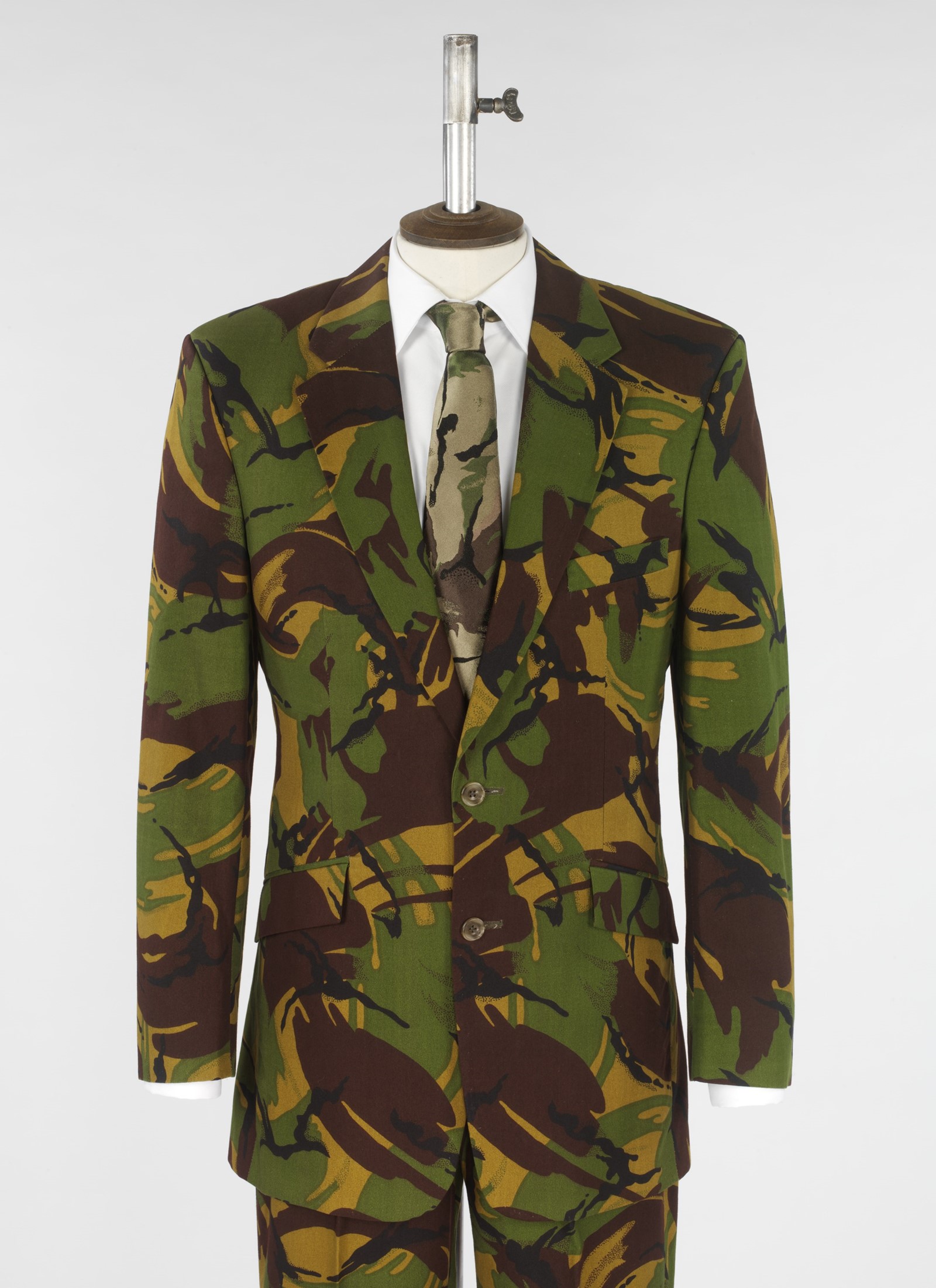
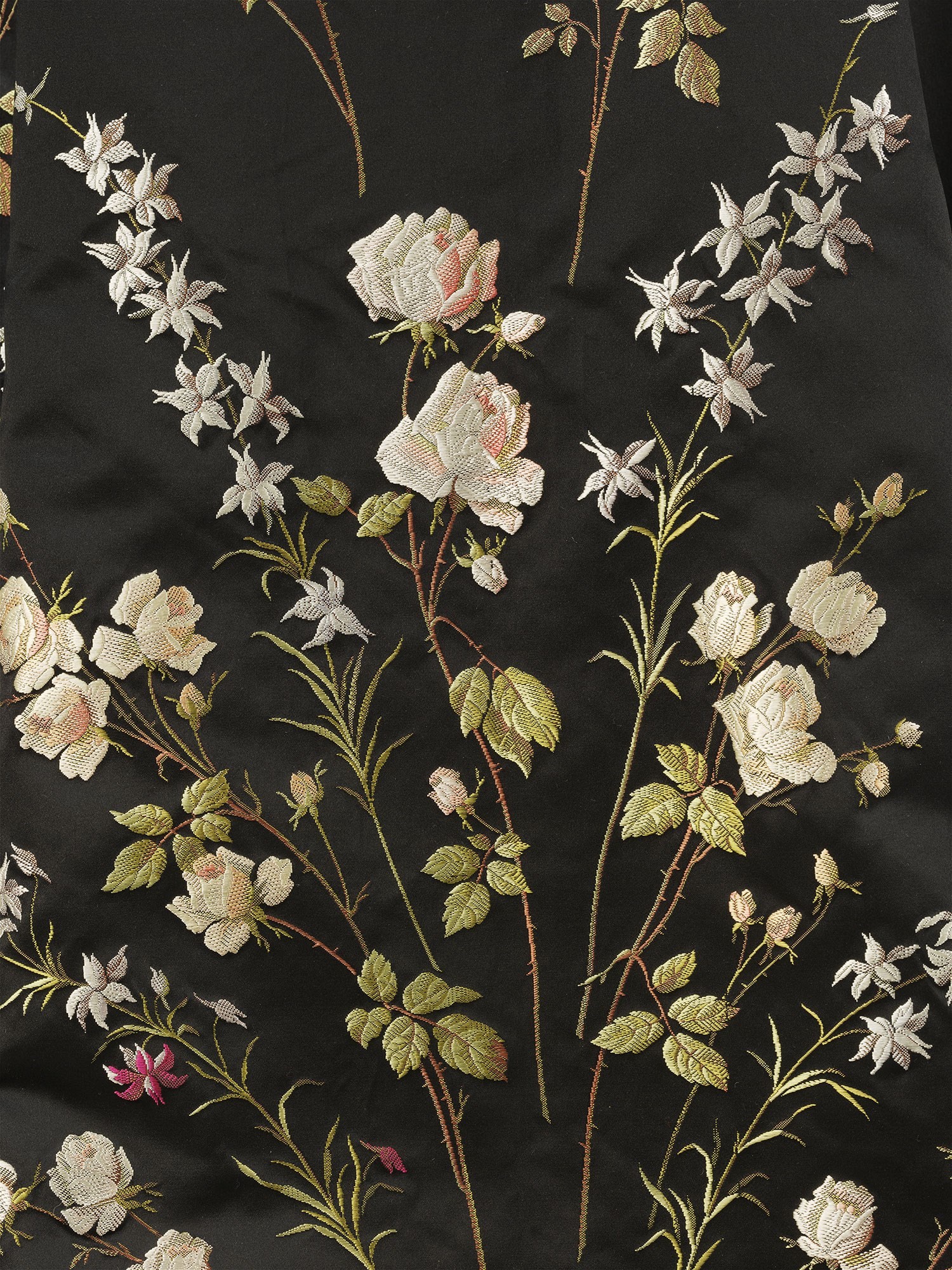
Fashion has always been the art of self-consciousness. In Eden, the fig leaves snatched up by our parents were there to hide their bodies; the Book of Genesis gives us the inaugural act of dressing as the first moment someone realised they were being watched. The V&A exhibition begins a little later, in 1600, before which point “very few clothes survive”; but people continued watching, and in the centuries that followed, bourgeois society trained up rangier, sharper eyes, forcing the scythes of fashion to improve their own sharpness and range. Here you see a 19th-century men’s woollen coat, its collar and cuffs plushly lined with the fur of no fewer than 32 Russian wolves. Adjacent, and roughly contemporary, is the breast of an albatross, its plumage politely framed with a little plaque underneath: “Dressed and prepared for making Ladies’ Muffs, etc.” It’s one of millions that were slaughtered in the Pacific and Southern Oceans.
We were self-conscious about our appearance, but less so about the objects we plundered to deal with our issues. By the end of the Victorian era, the rule of amorality had begun to breed exceptions. A Punch cartoon from 1892 depicts a feather-decked woman as the real ‘Bird of Prey’; three years later, an anonymous journalist condemns the fad for embellishing accessories like boas and muffs with animal body-parts, calling it ‘distasteful’ and ‘suggestive of death’. (Beside this information, Ehrman has placed a large raccoon-fur muff with four long, dangling tails.) The Society for the Prevention of Cruelty to Animals had been formed in 1824, and in 1891 the Society for the Protection of Birds followed suit. And yet, well into the 20th century, these remained only brakes upon excess. Before the Red List appeared in 1964, there was no global sense in which a species could be ‘endangered’. Wear an ocelot coat if you must; but you must wear it well.
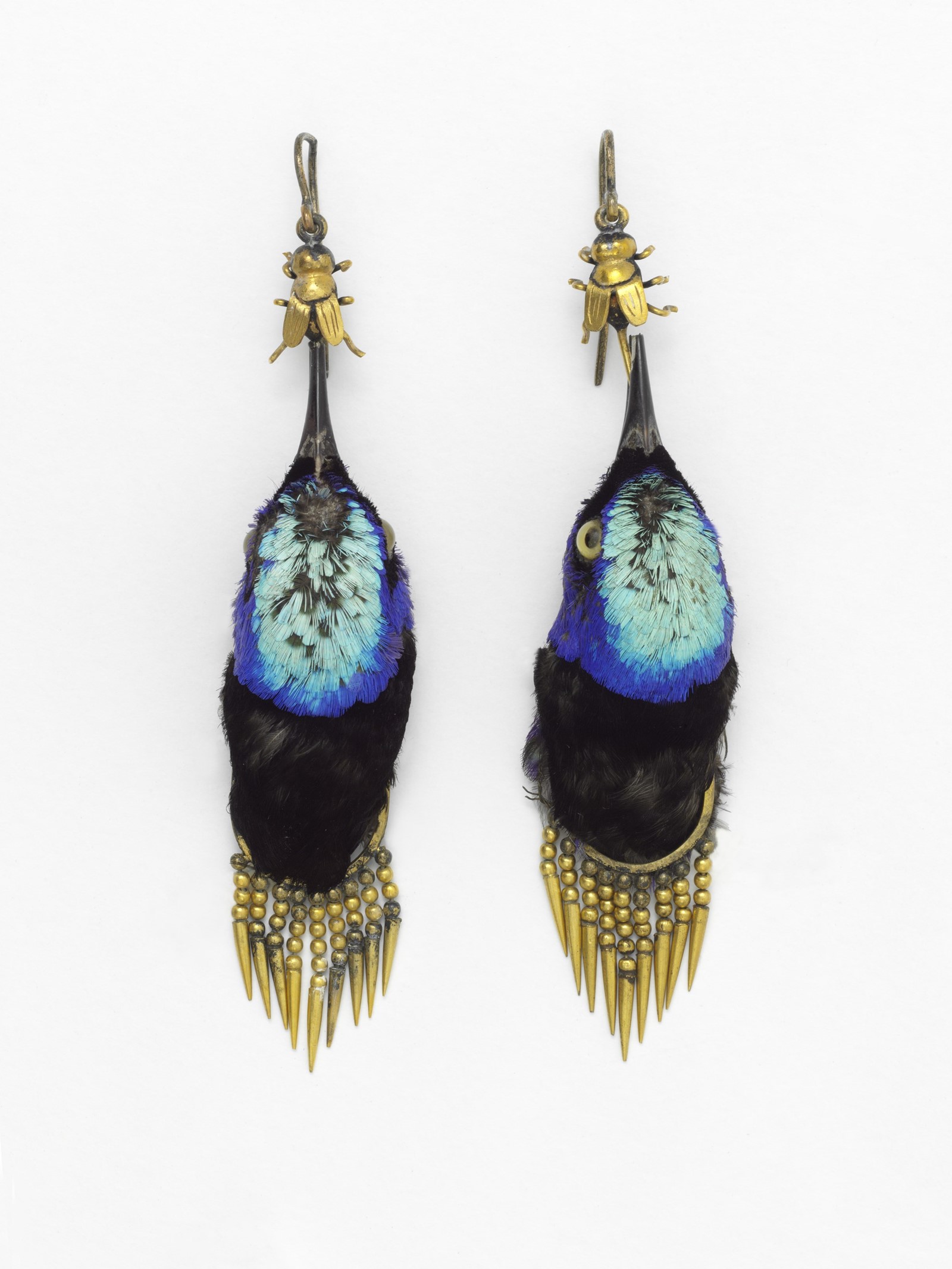
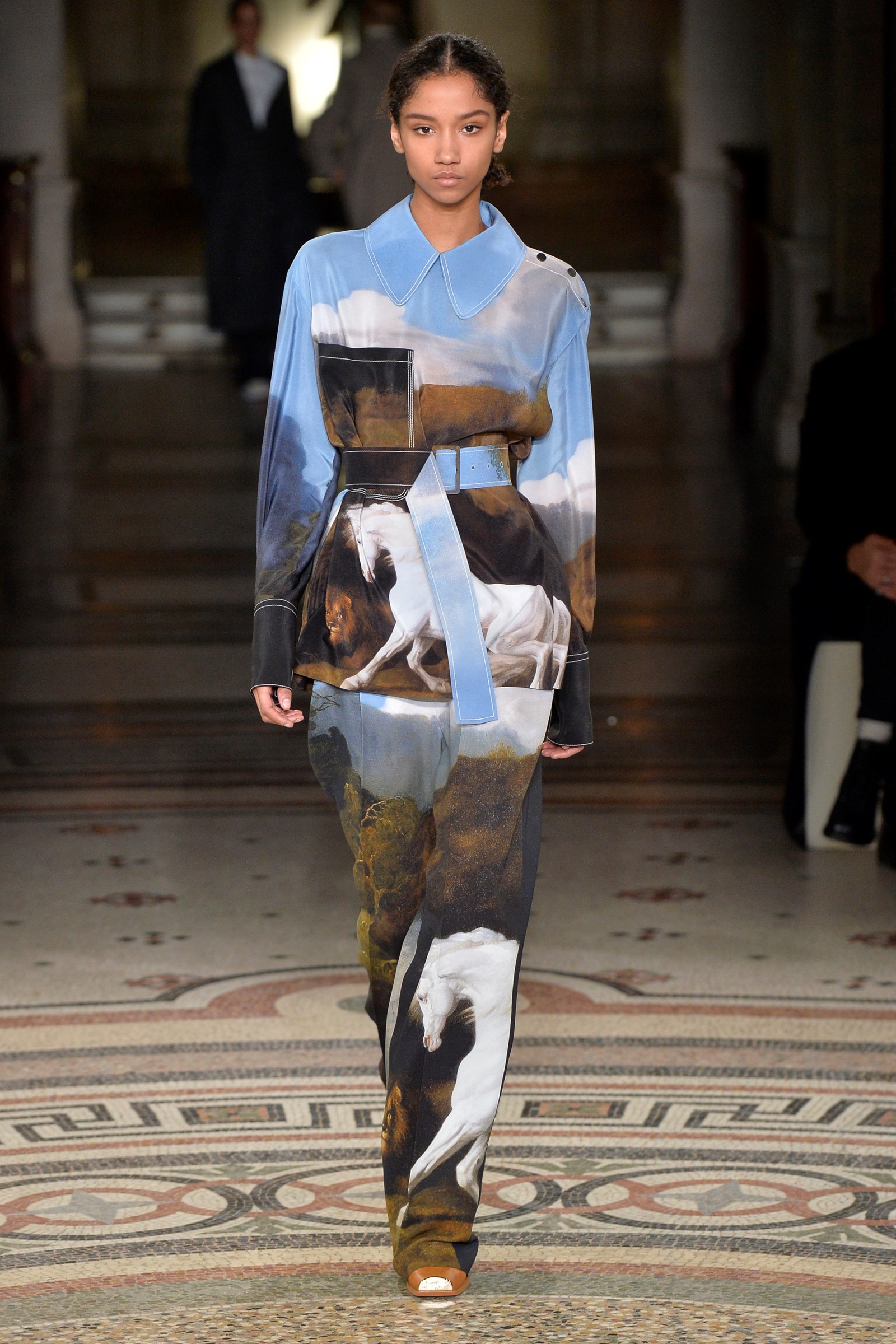
By the end of the 1960s, the environment was no longer something given, something inert. In 1961 came the World Wildlife Fund, with Friends of the Earth and Greenpeace following in 1971. Rachel Carson’s Silent Spring was published in 1962, telling of how ecology could be “a web of life – or death”. The first Earth Day was in 1970, the first United Nations conference on the environment in 1972. Fashion had been fingered as one of the greatest polluting culprits, which was belated but little surprise. With globalisation come scars on nature, and where a globalised industry feeds a universal need – clothing, fuel, food – the scars are often both the deepest and the hardest to map in full. As Stella McCartney says to anyone who’ll listen, the fashion and textile industry is now the second most polluting of all, behind only oil.
In the upstairs gallery at the V&A, there’s a cluster of posters and placards from several global environmental campaigns. They’re planted in a little protest circle, as if permanently locked in battle with the couture pieces encased around the same floor. These garments bring the exhibition up to the present day, and reflect how contemporary designers are approaching the new avenue of ecological design. Broadly, these approaches fall into two camps, the reticent and the brash. Plenty keep their green credentials quiet. Take the pair of orange Veja trainers designed in 2014 by Lily Cole; their garish colour and bold fern print may suggest, but don’t tell, that their cotton is organic and their rubber is sustainably sourced. Others are more strident: a magnificent evening gown by Tiziano Guardini is made of delicate strips of ‘vegea’ – “a leather alternative made from the stalks, seeds and skins left over from wine products”. Their deep purple hue and glossy surface demand that you ask what they are.
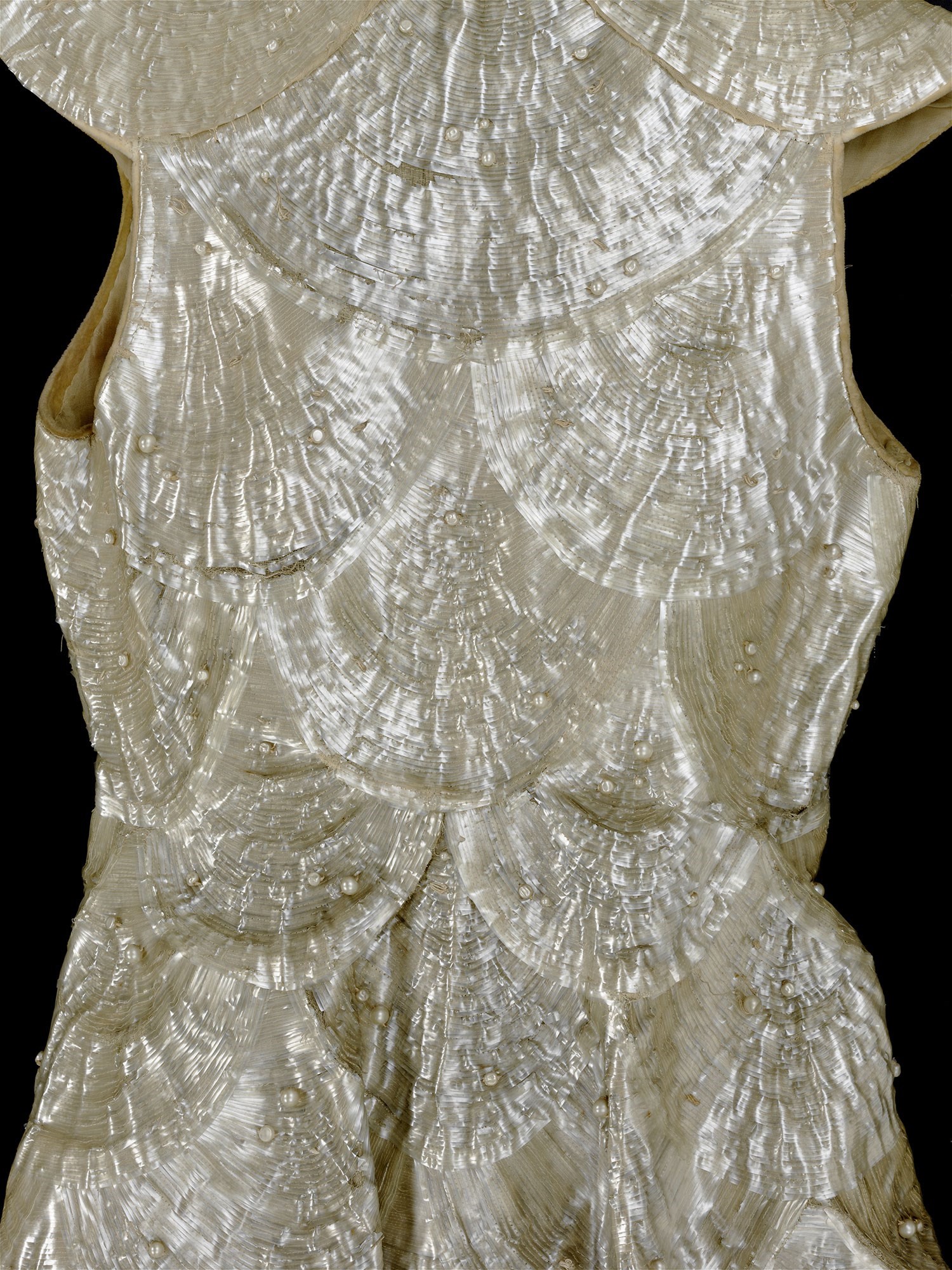
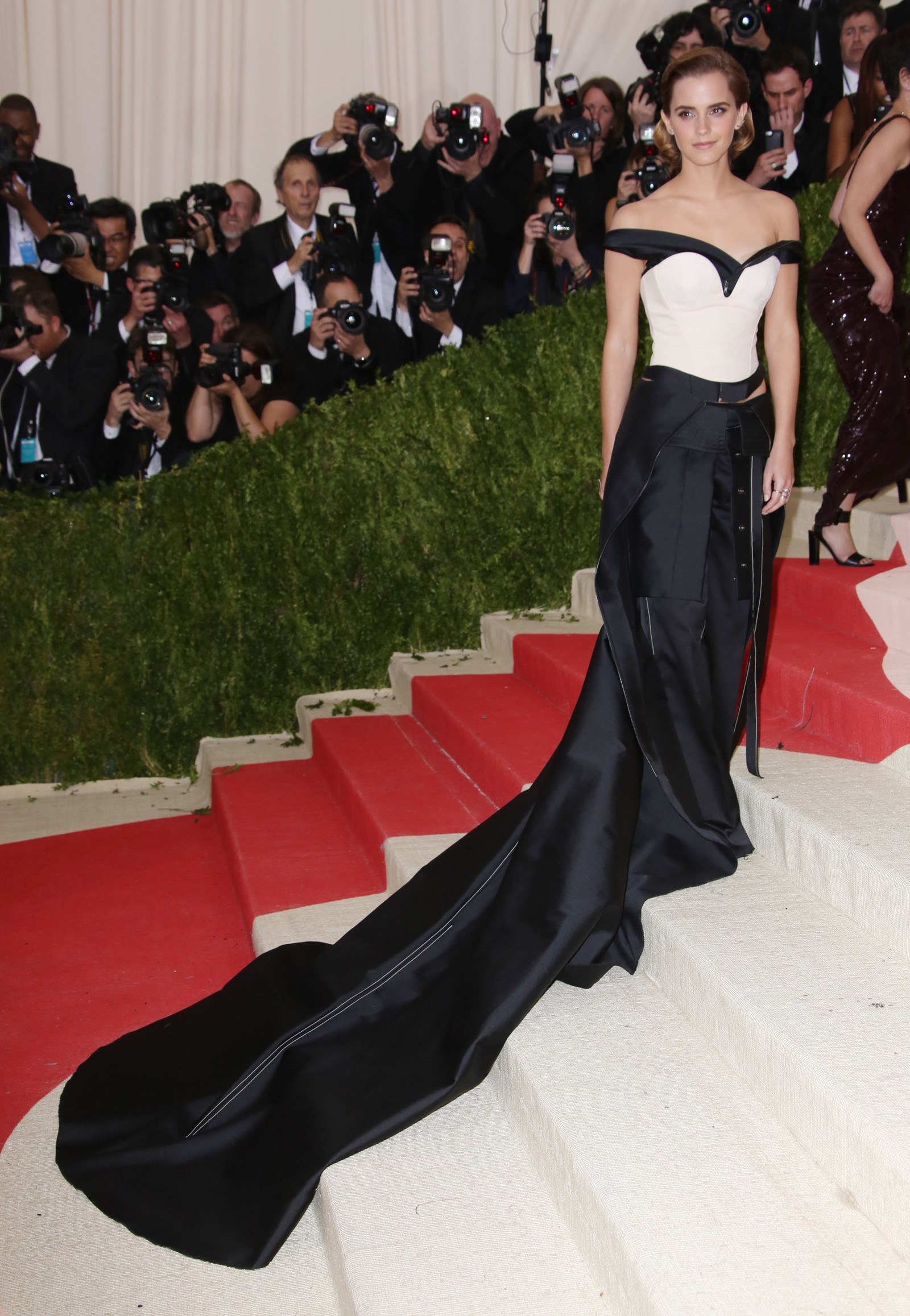
The muslin dress is a gorgeous, iridescent green; the muslin dress is a document of empire. Between the two kinds of ‘is’, the aesthetic and the historic, fall most opinions in practice. People will always be drawn to the superficial, after all, however ‘problematic’ they’re told it’s become; fashion is only a consequence of caring what others think. No surprise, then, that the V&A’s prize exhibit is one that tempers its politics with its visual appeal: Emma Watson’s 2016 Met Gala gown. At first glance it’s a classic, understated Calvin Klein dress, off-the-shoulder with a flowing black train – but look again. Not only is it actually a bustier with tailored trousers, to which the train is silently fixed – so this ‘dress’ can be dismantled and repurposed as separates – but the whole thing was made from recycled plastic bottles.
The Calvin Klein dress worked by impressing its onlookers as much as lecturing them. Statement pieces need audiences prepared to listen; nobody would care so much for the message behind Watson’s dress if its design hadn’t fascinated them first. Fashion will always be a moral art – we understand what our society wants to see by looking at how we appear before each other – but morality is prone to being superficial as well. First we have to be dazzled, and only then can we learn to see better.
Fashioned From Nature runs until January 27, 2019 at the V&A Museum, London.
